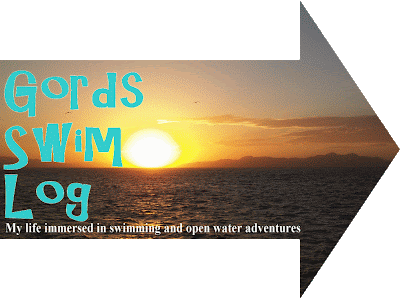 |
| Stuff that is in regular sea water. |
But in the Great Salt Lake, our soup isn't quite so diverse, although I've never actually looked at it under a microscope. Most of the other stuff from the sea simply doesn't live in the Great Salt Lake and if it was somehow transported there, it wouldn't survive. The only organisms that survive, and thrive in the Great Salt Lake are mainly:
 |
| Brine Shrimp - these little things make some of my swims entertaining. I'll take swimming with these over sharks any day. |
- Brine Shrimp - I love these little guys. They just swim around all day in little tiny circles, they don't bite, they don't get in my mouth, and they're kinda cute. I attended a presentation about the Brine Shrimping industry a while back at one of the Great Salt Lake Tech Meetings. It was fascinating how much revenue these things generate!
- The Brine Shrimp's food supply: Free Floating Microbes - Dunaliella. In the spring the brine shrimp feed on this stuff and it really improves the water clarity. Soon the bottom can be seen while swimming and the sunlight actually reaches the bottom, and provides energy for the bottom dwelling bacteria.
- Bottom Dwelling Cyanobacteria - which I asked Dave about and he called it carpet algae. It typically stays on the bottom, but in the summer months detaches from the Bioherms(see below) and comes to the surface, and to the typical lake visitor the carpet algae that floats on the surface looks like cow pies. Pretty disturbing to the new swimmer. The brine flies love this stuff, they feed off it. So in the summer when the carpet algae starts to surface and the brine fly population explodes, I'm outta there and heading up to Pineview on a regular basis.
- Bioherms: These things are cool to see when the water clears up. It's like flying in a jet over the Sierra Nevada range. In between the bioherms are patches of sand. It's really cool. The bioherms often have a soft carpet type feel to them. The bioherms are the remnants of the cyanobacteria and is
Limestone, the lake's special reef which is the reason why we have a buoy line leading out from the marina. There is a channel where the bioherms don't thrive and allows the boats to actually get out into the lake. If the boats scrape along the bottom and hit a bioherm, that could be tragic for the boat.
Brine Flies and carpet algae. Not a
favorite thing for a GSL swimmer. - Brine Flies - These are the critters that thrive in the warm summer months. For me they don't bother me in the water, but on the surface where it makes breathing difficult when you inhale a bunch of these things. During the spring/fall/winter, the brine flies are dead, so that is my favorite time of year to swim in the GSL.
- Birds - the Great Salt Lake is a huge melting pot for many bird species. Without the GSL many birds would be in huge trouble and could go extinct.
---------------------------------------------------------------------------
Now as for this morning's swim:
Got in the pool at 0530 and did:
500 free easy
400 kick with fins
300 - 3 x 100's back/free/breast
200 IM
100 drill
25 breast
19 x 100's free - get out and do 10 pushups (4 @ 2:15, 4 @ 2:10, 4@2:05, 4@2:00, 3 no rest) with 20 pushups afterwards (200 pushups total)
75 breast
2 x (400 pull, 4 x 100's TT desc on 1:30, 8 x 50's kick/back/free/drill)
100 warmdown
6,000 yards total in 1:48

No comments:
Post a Comment